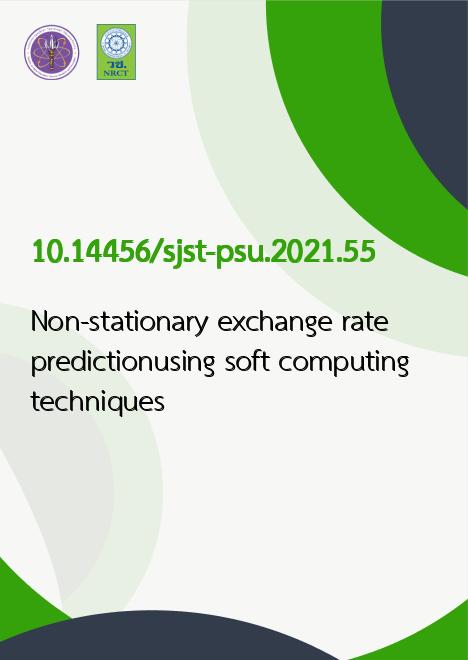
|
Non-stationary exchange rate predictionusing soft computing techniques |
|---|---|
| รหัสดีโอไอ | |
| Creator | 1. Putriaji Hendikawati 2. Subanar 3. Abdurakhman 4. Tarno |
| Title | Non-stationary exchange rate predictionusing soft computing techniques |
| Publisher | Research and Development Office, Prince of Songkla University |
| Publication Year | 2564 |
| Journal Title | Songklanakarin Journal of Science and Technology (SJST) |
| Journal Vol. | 43 |
| Journal No. | 2 |
| Page no. | 422-430 |
| Keyword | nonstationary, time series, forecasting, soft computing |
| URL Website | https://rdo.psu.ac.th/sjstweb/index.php |
| ISSN | 0125-3395 |
| Abstract | Soft computing is widely used as it enables forecasting with fast learning capacity and adaptability, and can process datadespite uncertainties and complex nonlinear relationships. Soft computing can model nonlinear relationships with better accuracythan traditional statistical and econometric models, and does not make much assumptions regarding the data set. In addition, softcomputing can be used on nonlinear and nonstationary time series data when the use of conventional methods is not possible. Inthis paper, we compare estimates of the nonstationary USD/IDR exchange rates obtained by three soft computing methods: fuzzytime series (FTS), the artificial neural network (ANN), and the adaptive-network-based fuzzy inference system (ANFIS). Theperformances of these methods are compared by examining the forecast errors of the estimates against the real values. Comparedto ANN and FTS, ANFIS produced better results by making predictions with the smallest root mean square error. |
